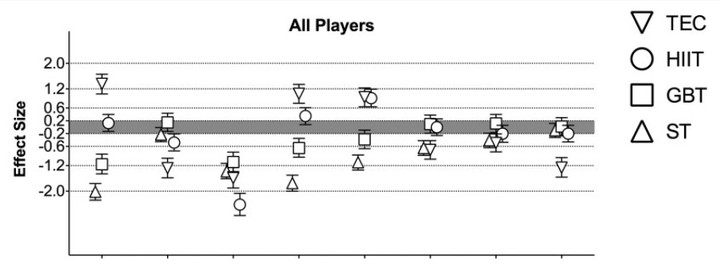
Abstract
Closely matching training session exertions with actual match-play intensities ensures players are physically prepared for competition. The movement patterns of four typical rugby union training activities (traditional endurance, high-intensity interval, game-based and skills training) were compared with match-play using global positioning systems. The degree of difference from match-play was determined by calculating Cohen’s effect size statistic. Training activities for players in different positions (tight forward, loose forward, scrumhalf, inside back and outside back) were similarly assessed. Movement patterns were measured as relative distance, distance walking (0–2 m.s−1), jogging (2–4 m.s−1), striding (4–6 m.s−1) and sprinting (>6 m.s−1) and sprint and acceleration (>2.75 m.s−2) frequency. Overall, high-intensity interval training was the most similar to match-play, and could be adopted as a primary training activity. Game-based training failed to meet match intensity in all positions (Effect size = medium to large). If game-based training is used as the primary training activity, supplementary training is required to ensure players are adequately prepared for match demands.